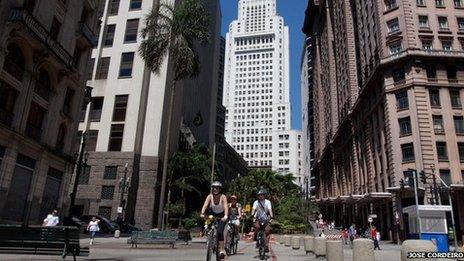World Cup 2014: A-Z of a memorable tournament
- Published
World Cup 2014 final: Germany v Argentina - World Cup rivals
From Algeria's heroics to Zamorano's lively language, the 2014 Fifa World Cup has provided plenty of memorable moments.
Here BBC Sport reflects on the tournament - in alphabetical form.
A is for Avenida Atlantica and Algeria
Avenida Atlantica is the chaotic stretch of dual carriageway that sweeps around the ocean parallel to Copacabana Beach.
It served as the heartbeat of the Fanfest and temporary resting place for supporters from around the world with no permanent home in Rio.
Argentine camper fans parked overnight were a feature as were early morning sights of breakfast being cooked and served.
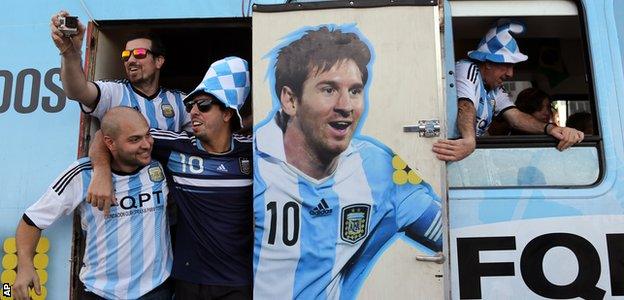
The disappointment of Cameroon, Ghana and Ivory Coast left Algeria to fly the African flag - and they did their continent proud.
The Desert Foxes reached the knockout stage for the first time and produced a stirring last-16 display against Germany, only to succumb in extra time.

Coach Vahid Halilhodzic, who stepped down after the tournament, and many of his players left the field in tears, but a sea of fans greeted the squad in Algiers and state TV dedicated a special programme to the squad entitled "Thank You Heroes."
B is for bite

Few inside the Estadio das Dunas in Natal could believe their eyes when Luis Suarez committed the most infamous act of this, or perhaps any other, World Cup.
World Cup moments: Suarez bites Chiellini
The post-match news conference set the tone for the Uruguayan denials and Suarez swept through the mixed zone like a man who knew he was in trouble. Italy defender Giorgio Chiellini, who was bitten, said little as he walked onto the team bus.
BBC Sport's Ben Smith asked, "did it hurt?" "Yes, it did." Ultimately, it hurt Uruguay more.
Suarez was suspended for their last-16 match with Colombia - the first absence of a four-month ban - as they lost 2-0.
C is for Costa Rica, controversy and craques

Costa Rica came into the World Cup, bereft of two of their best players, and in a World Cup group with three former world champions (including England). They left it agonisingly close to the semi-finals and to a heroes welcome back home.
Having beaten Uruguay and Italy, and drawing with England in a dead rubber, they then saw off Greece in a penalty shootout in the last 16 but lost to the Netherlands by the same method in the quarter-final.
Had Marcos Urena taken his chance in the 117th minute - or Louis van Gaal not brought on Tim Krul (see K) for the penalty shootout, they could have been in the last four.
The opening match between Brazil and Croatia drew as much attention for decisions made by referee Yuichi Nishimura as it did for the actual football.
Few games passed without moments of controversy, the biggest coming when Luis Suarez bit Giorgio Chiellini (see B).
World Cup 2014: Perfect 10s shine in Brazil
Algeria were fined for use of lasers by their supporters, Cameroon embroiled in match-fixing allegations, one England fan had a piece of his ear bitten off by another England fan and Arjen Robben was accused of diving.
This was the World Cup when the craques came to the party in a very big way.
The Brazilian term, which originates from British military parlance, is used to identify a team's star player, the man who carries the hopes of a nation.
Lionel Messi, Neymar (see N), James Rodriguez (see J), Robin van Persie, Thomas Muller and the rest all raised their game to light up the tournament in a way many of the world's best failed to in South Africa. Cristiano Ronaldo and Wayne Rooney were exceptions.
D is for dancing and Deschamps
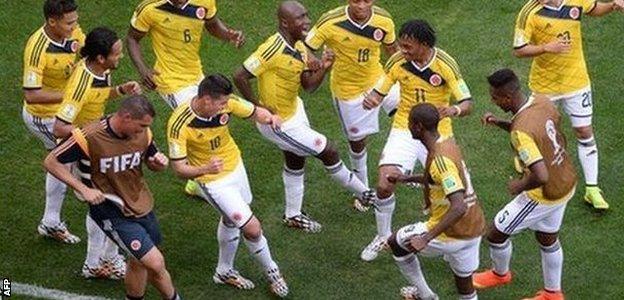
Celebration of the tournament arguably belonged to the superb Colombians, who showed a hip-shaking, rhythmic ability that captured the sheer joy and fun of a World Cup in the home of samba.
Relive the best celebrations of the 2014 World Cup
As far as a celebratory dance goes it was off the scale.
Avoiding the mutiny that scarred France's 2010 World Cup debacle was one thing, leading them to the quarter-finals with an attractive style of play that had some tipping them as dark horses for the title another.
Didier Deschamps has returned Les Blues to the top table of world football and, despite a meek surrender to Germany, they will now be among the favourites when they host Euro 2016.
E is for England

In World Cup terms, it was a blink and you missed it campaign from England.
Out after two group defeats by Italy and Uruguay, any gloss of optimism after the opening game was removed on close inspection of the rest of the tournament, which suggested England are being left behind.
Coach Roy Hodgson is the man entrusted with playing catch up - but has he got the style and inspiration to do it?
F is for fans and futsal
They came from all corners of the globe. They came in all shapes and sizes. They were not going to miss football's biggest fiesta.
Some drove cars from San Francisco, others camped, some slept wherever they could. Those that travelled from South and Central America brought unrivalled noise, colour and passion to this tournament.

Chile, Costa Rica, Colombia, Mexico and Argentina fans stole the show.
Some US fans gave up their jobs to stay and watch, while a few Costa Rica supporters spent triple their original budget just to follow their country's surprisingly extended adventure.
There were even England fans, still wearing the shirt, clinging on to be part of this World Cup right to the end. And who can blame them?
Archive: Is futsal the secret to Brazilian success?
Futsal - the game that made Brazil great remains as popular and widespread as ever before.
They play in small spaces in Sao Paulo, by the beach in Salvador and Recife.
They play by the light of the moon and the street lamps when the sun goes down. The ball flashes around these courts in a blur, the speed of mind and of foot grooving a technique that develops one fine Brazilian footballer after another.
G is for goals, goals and more goals
There were 136 of them in the 48 group games - an average of 2.83 per fixture. This was a record for a World Cup, with six more than 2002.
World Cup 2014: The race for the Golden Boot
After that the goals slightly dried up (Brazil v Germany aside) but we still saw a joint record 171 for a tournament - level with 1998.
There has been quality as well as quantity.
James Rodriguez's left-foot thunderbolt, Robin van Persie's acrobatic header, Tim Cahill's strike that thumped the underside of the crossbar before bouncing down over the line - creating memories that will last a lifetime.
H is for Howard, the American hero
Inside Arena Fonte Nova mouths fell open and even the Belgium players could only applaud as Tim Howard produced one of the great individual performances of the World Cup.
Tim Howard's record-breaking game
The US goalkeeper was a one-man wall of steel, as Belgium bombarded his goal in Salvador.
Howard made more saves (15) in a World Cup match than anyone since records began.
In the end, he was beaten twice and so were his nation but only after a brave and thrilling comeback in extra-time. USA President Barack Obama called to express his pride and he became a trending topic on social media with the hashtag #ThingsTimHowardCanSave.
In addition, someone changed the US Secretary of Defence on Wikipedia to Tim Howard.
I is for injuries
Archive: Zuniga challenge ends Neymar's World Cup
Radamel Falcao, Franck Ribery, Marco Reus and Rafael van der Vaart were ruled out before a ball had been kicked, though their nations still all reached the quarter-finals or better.
The same could not be said for Thiago Alcantara, Riccardo Montolivo or Theo Walcott, whose teams fell at the group stage, while Alex Oxlade-Chamberlain travelled to Brazil but did not play.
During the competition, Neymar was the most high-profile casualty, Sergio Aguero and Angel Di Maria also suffered problems, and Cristiano Ronaldo was not at full fitness.
J is for Jesus and James Rodriguez
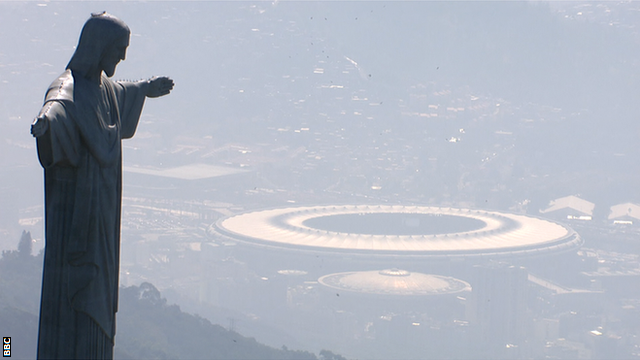
Get there first thing or be prepared to queue for hours to visit Christ the Redeemer, the 36m tall statue of Jesus that looks down over the Maracana and the rest of Rio de Janeiro.
It has been throbbing with football fans throughout the tournament.
There has also been a very religious feel to many celebrations, while Brazil captain Thiago Silva spent the minutes before his team's penalty shootout victory against Chile deep in prayer.
World Cup 2014: James Rodriguez's six World Cup goals
Never has there been as much discussion in Britain about how to say the word James. But the Colombian, named after James Bond, but pronounced "Ham-ez" stole the show in Brazil.
The 22-year-old, who stepped into the limelight following the injury to Monaco team-mate Radamel Falcao, scored six goals in five games - winning him the Golden Boot.
His club side paid £38.5m to sign him from FC Porto last summer - it's fair to say they'll be making a profit if they cash in on him now.
K is for Klose and Krul

Miroslav Klose came into the tournament needing two goals to become the World Cup's all-time leading scorer. He got them.
The 36-year-old Lazio player scored with his first touch, from a yard out, against Ghana and become the joint top-scorer in World Cup history, alongside Ronaldo. He then scored his landmark 16th in the 7-1 rout of Ronaldo's former side Brazil.
Klose's record 16 World Cup goals
Tim Krul did not figure much but he sure made a big impression.
Brought on with seconds of extra-time remaining in the Netherlands' quarter-final tie against Costa Rica, he did his best to put his opponents off in the penalty shootout, dived the right way all five times and saved twice to become an unlikely hero, and perhaps a little bit of a villain as well.
In their semi-final Louis van Gaal could not bring him on as he had already made three substitutions and number one Jasper Cillessen failed to stop any penalties as Argentina won.
L is for Lapa and David Luiz
Want to find the party in Rio on a Saturday night?
Head down to Lapa in the centre of Rio and you'll have your answer.
A throbbing mass of humanity partying in such great number that cars can only weave their way down the road with great difficulty. Make sure you head to the petrol station in the centre of Lapa.
There's nowhere else where you can party and get a litre of unleaded at the same time.
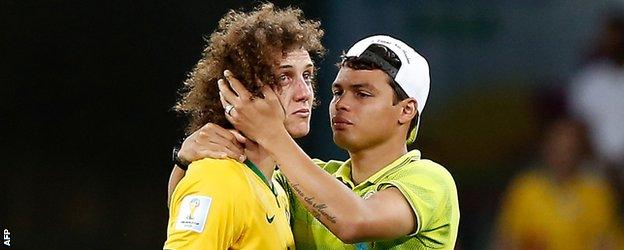
David Luiz opened the tournament by leaving Chelsea for Paris St-Germain, scored a cracking free-kick in the win over Colombia and ended up in tears after what Alan Hansen called "one of the worst performances I have ever seen", skippering his side in the 7-1 semi-final defeat by Germany.
M is for mate, Manaus and Messi
No trip to the chilly southern city of Porto Alegre, which staged five matches, was complete without some mate to warm the cockles.
While the liquid of choice in most other parts of the country was ice-cold water or beer, this tea-like drink - served in a gourd, sipped through a bomba (metal straw) and a speciality of the gauchos - was the perfect companion as the temperatures plummeted.

Manaus was the World Cup's most exotic and unique location.
In the heart of the Amazonian rainforest, the descent into the airport painted a spectacular picture of both the rainforest and then the giant sweep of the river.
A mix of colonial buildings - including an opera house - and with a Caribbean air, temperatures and humidity were at their most fierce here.
Lionel Messi scores stunning goal in stoppage time
The man who finally stepped out of Diego Maradona's shadow, Lionel Messi was the undisputed star of the show for Argentina.
He scored the winner in his team's opening game against Bosnia-Hercegovina, leaving a trail of opponents on their backsides, and never looked back - scoring the only goal against Iran and adding two more against Nigeria.
He was a shining light in an occasionally dull team. The water in the desert, as boss Alejandro Sabella described him.
N is for Neymar
The poster boy of this tournament, the man that all of Brazil loves and the name on the back of a million counterfeit shirts - it is hard not to feel sorry for poor old Neymar.
The 22-year-old carried the hopes of 200 million people on his young shoulders and did it with style, grace and humility.
Yet his dream of guiding Brazil all the way to victory was ended when he broke a vertebra in his back following a challenge by Colombia's Juan Zuniga in their quarter-final tie.
Brazil wept, but Neymar told them they must keep believing in a video message the following day. David Luiz and Julio Cesar held up his jersey before their 7-1 semi-final humiliation by Germany where he was greatly missed.
O is for organisation
The build-up to the World Cup was dominated by legitimate fears over stadiums, infrastructure, safety and protests, but many of the concerns failed to materialise.
Although everybody will have a different view and not everything was perfect - some construction projects were incomplete, while minor building work was still taking place at certain venues and airports as the tournament began - the event ran fairly smoothly with few major issues.

Teams seemed happy with their facilities, pitches were in reasonable condition and the majority of spectators were content with the matchday experience.
Transport tended to be painless, security tight and public unrest largely absent.
P is for people (kind, courteous, usually smiling, always happy to help)
Brazil and its people opened their arms to the world and left a brilliant impression on most who visited.
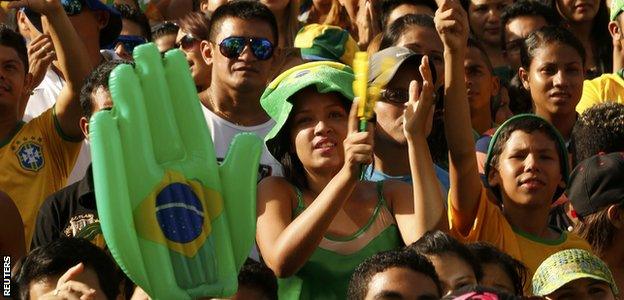
The poverty was excruciating to witness, but the positivity in adversity a joy to behold. Language barriers were an issue but never insurmountable.
The spirit, vibrancy and love of football were infectious, the passion for nation in spite of political grievances was inspirational.
The warmest of welcomes, the fondest of farewells.
Q is for Queiroz
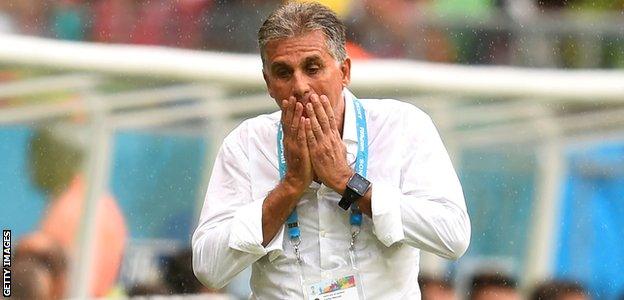
Iran coach Carlos Queiroz stepped down after the World Cup - where they drew with Nigeria and were seconds away from holding Argentina.
The Portuguese was not happy with a lack of government financial backing - which was largely caused by political restrictions placed on the country.
However after the tournament, the Iran Football Federation offered him a new contract and said it was hopeful he would reconsider.
R is for rain, especially in Recife
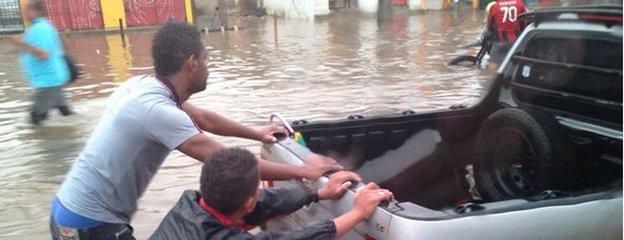
It might not happen all that often, but when it does it tends to be spectacular.
The journey to Arena Pernambuco on 26 June was like none previously experienced by the BBC team making its way slowly to the stadium.
The rain started to fall during the night. By morning, Recife's roads had become rivers.
The water was so deep in places that waves swept up and down the streets. The route to the stadium was not passable, but locals sensed an opportunity.
They charged fans, media, anyone else, small amounts of money to push cars, vans and even buses, through the flood water. Hundred of US fans even ditched their vehicles and walked more than 10 miles to the match. Football won out.
S is for seven, struggling Spain and spectacular saves

Seven - the number that sent Brazil into meltdown and despair, hurtling towards a new low, an entirely new nightmare.
Forget 1950, the 7-1 semi-final humiliation against Germany was the lowest point in their football history. It will never be forgotten in Brazil, and for the most painful of reasons.
Another team to be humiliated were holders Spain. They lost 5-1 to the Netherlands in their opener - in what looked like it would be the most shocking result of the tournament until Germany met Brazil.
It was always a big ask to retain the title, but few predicted Spain would fall at the group stage.
Highlights: Spain 0-2 Chile
Inside both Arena Fonte Nova and the Maracana, where they were stunned by Netherlands and Chile respectively, there was a palpable sense that we were witnessing something historic: the end of an era.
La Roja's six-year rule of the game is over, a turnover of players is sure to follow and uncertainty surrounds the future of coach Vicente Del Bosque.
'Tiki taka' remains at the heart of Spain's philosophy, but it must evolve if they are to challenge again.
What we also saw during the World Cup was a host of spectacular saves.
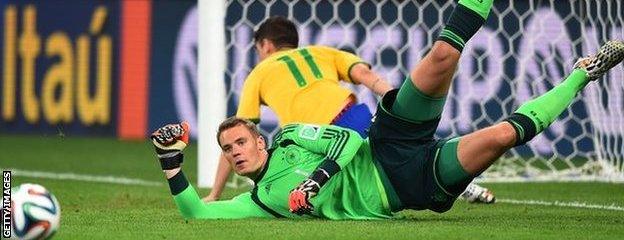
Germany's Manuel Neuer was not only about saves but caught the eye with the way he patrolled his half of the pitch, rushing out and acting like an extra defender.
Mexico's Guillermo Ochoa, Costa Rica's Keylor Navas and, of course, the US's Tim Howard (see H) were among those who went home with their share price on the rise.
T is for tears, in many different places
Brazil set the tone with an emotional rendition of their national anthem before the tournament opener against Croatia - and for the likes of Neymar, David Luiz and Julio Cesar it was not a one-off but a sign of things to come.
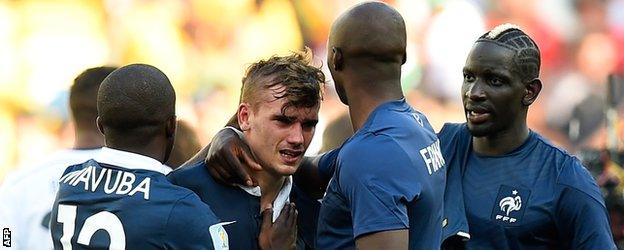
The media and ex-players urged them to stop crying and this was part of the reason why coach Luiz Felipe Scolari called a psychologist into the camp.
Elsewhere, the Chile team - especially Gary Medel - were in pieces after their elimination, as were Algeria coach Vahid Halilhodzic, Antoine Griezmann of France and Colombia's James Rodriguez.
U is for underdogs, the USA and Urca
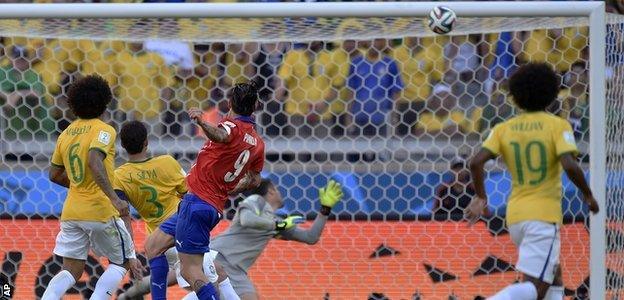
Costa Rica (see C) were not the only surprise package in Brazil. Few tipped Chile to progress at Spain's expense or USA at Portugal's.
Dubbed 'the Spain of South America', Chile ended up eliminating the world and European champions to end their era of dominance.
Jorge Sampaoli's men were denied a last-16 victory over hosts Brazil when Mauricio Pinilla smashed his shot against the crossbar.
Other teams threatened upsets without delivering the final blow, among them Australia and Mexico against Netherlands, Iran and Switzerland against Argentina, Ghana and Algeria against Germany.
It proved there is strength in depth at international level and added a romantic element to a gripping event.
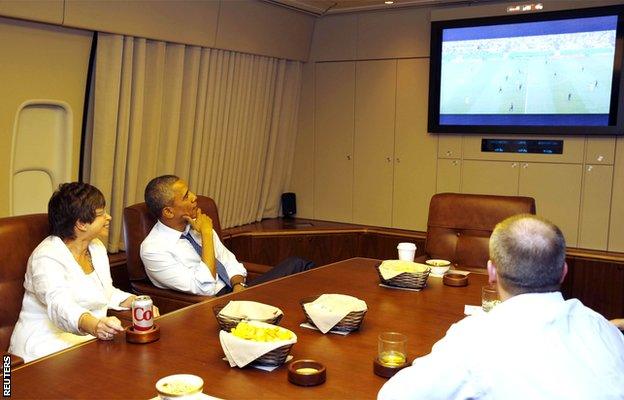
Was this the World Cup that saw football break through its final frontier?
A friendly time-zone, a successful team and a travelling support that was bigger than any other, all came together to create a unique blend that led to record TV audiences and crowds of tens of thousands watching on Stateside.
Barack Obama watched from Air Force One and the White House.
Urca Military Base, a short drive from Copacabana and in the shadow of Sugarloaf mountain, was England's training headquarters for their short stay in Brazil.
Magnificently appointed. Spectacular setting. Hardly used.
V is for vanishing spray

It may resemble shaving foam and more than a few referees may have sprayed the players' boots, but the spray that marks the 10 yards the wall must retreat has been a genuine success story of this World Cup.
It has been utilised in Brazilian and Argentine football for several seasons, was trialled at last year's Fifa Under-20 World Cup and will be introduced to the Champions League next season.
Contained in a holster attached to the official's shorts, it is used to mark the spot of a free-kick near the penalty area and the distance away that a defensive wall must stand, disappearing from the grass within a minute.
W is for water and words of inspiration
The first cooling break in World Cup history took place in the intense heat of Fortaleza when Netherlands beat Mexico.
It gave the players the chance to rehydrate - and much more besides.
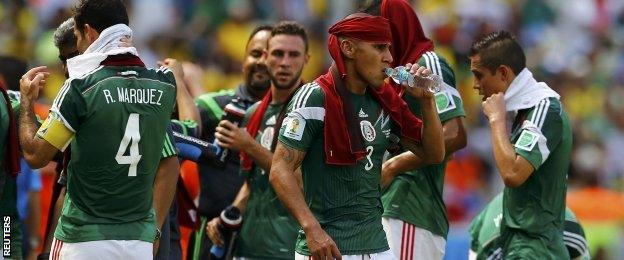
Mexico players take a drinks break
On the field, the temperature was recorded at 39C but rather than simply use the time to rehydrate his players, Dutch coach Louis Van Gaal later revealed he used the time to make a tactical switch that turned the game Netherlands' way in the last 15 minutes.
If the World Cup does take place in Qatar in 2022, we may be seeing many more of these.
X is for Xherdan Shaqiri and X-Ray
Known as the Alpine Messi, Switzerland striker Xherdan Shaqiri has been linked with a summer move from Bayern Munich to Liverpool.
Xherdan Shaqiri's wonder strike gives Switzerland lead
Not just included here because his name helpfully starts with an X, he scored the only all left-footed hat-trick in World Cup history and was named man of the match twice as his team reached the last 16.
Not long after Neymar was stretchered off it was an X-ray that confirmed everyone's worst suspicions - that the darling of Brazil was out of the World Cup. Within hours, an image of the scan was doing the rounds on social media.
Y is for yellow (and green)
Everywhere. On the streets, in the bars, hanging from hangers at every market stand.
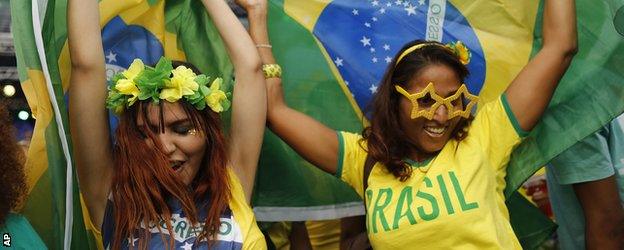
Brazil is a country bathed in the yellow and green of Brazil.
On a Selecao matchday you cannot move without seeing Brazil shirts. Generally with a number 10 on the back, and the name Neymar Jr above it. The most iconic kit in world football.
Z is for Zamorano
Chile legend Ivan Zamorano was working in Brazil as a television pundit - and apparently engaged in some lively language when Mauricio Pinilla struck the crossbar late in his team's game against Brazil.

Zamorano, nicknamed Bam Bam, reckons this current Chile team have broken the mould and can go on to achieve great things.
- Published12 July 2014
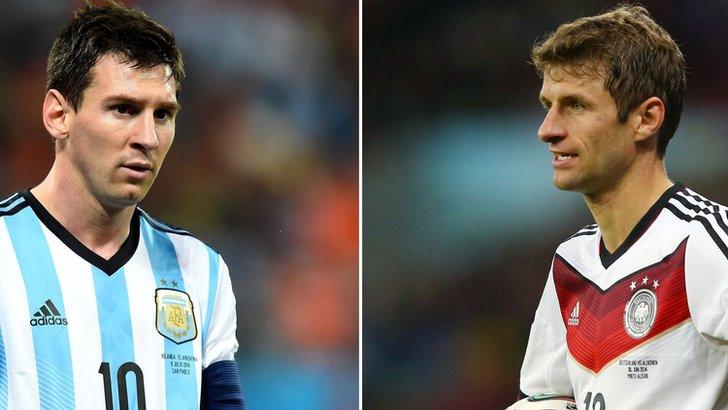
- Published13 July 2014
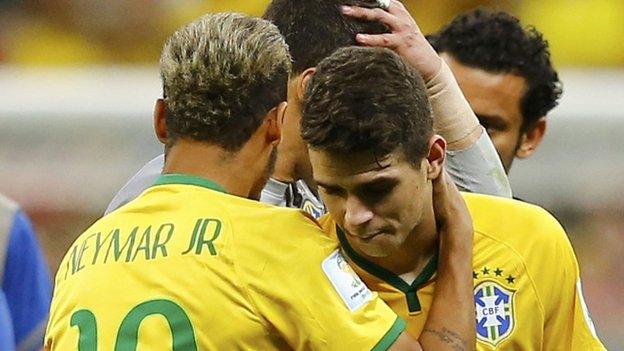
- Published11 July 2014
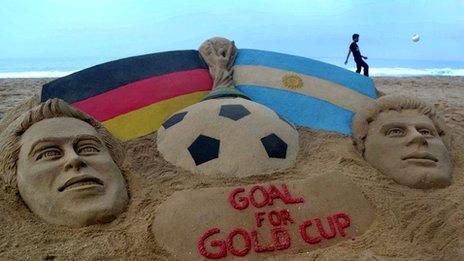
- Attribution
- Published12 June 2014
